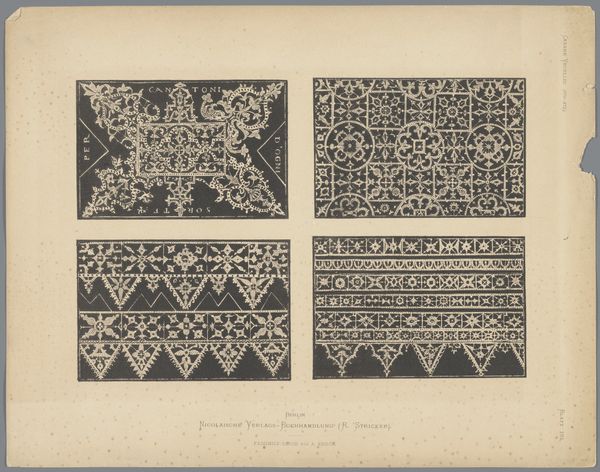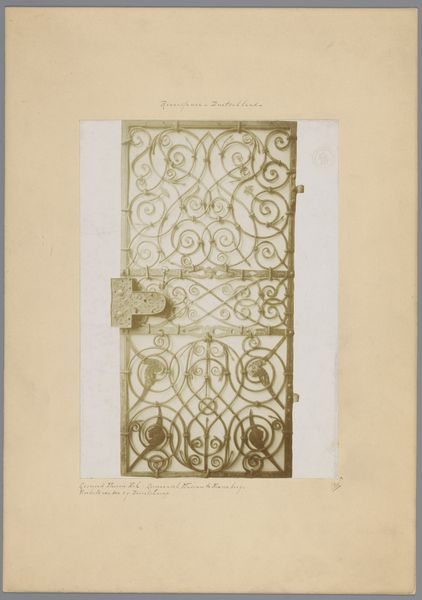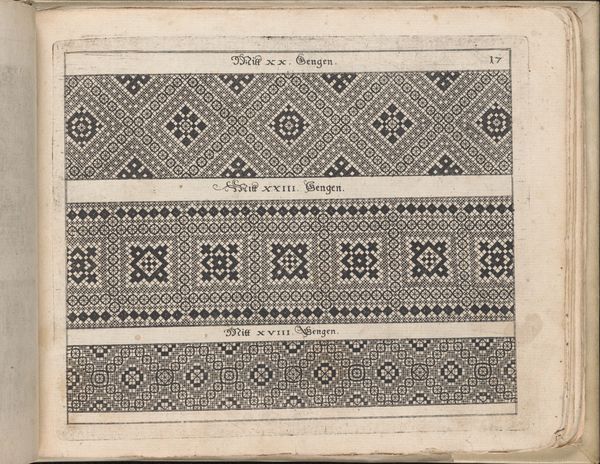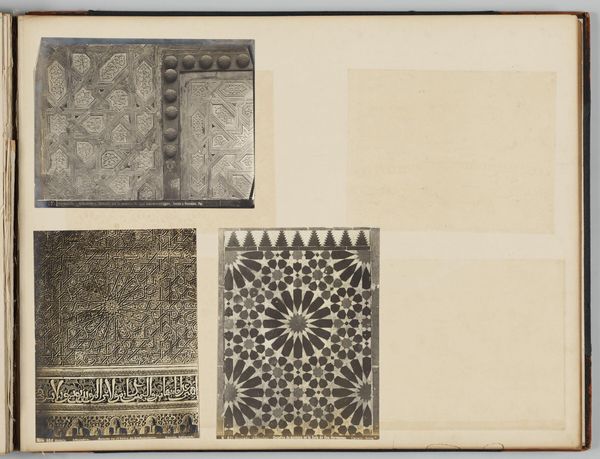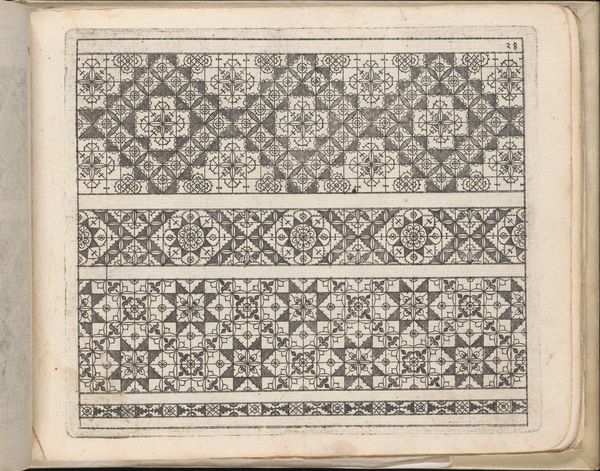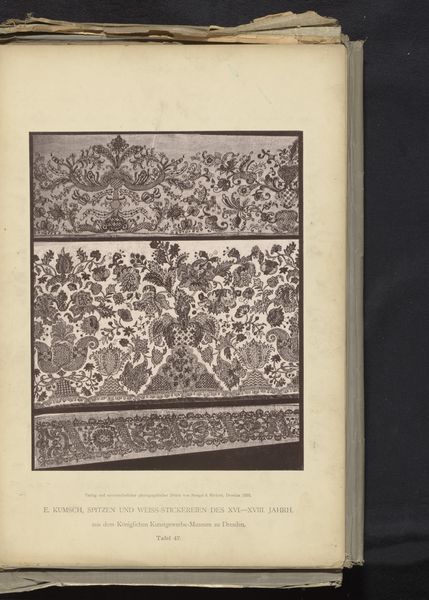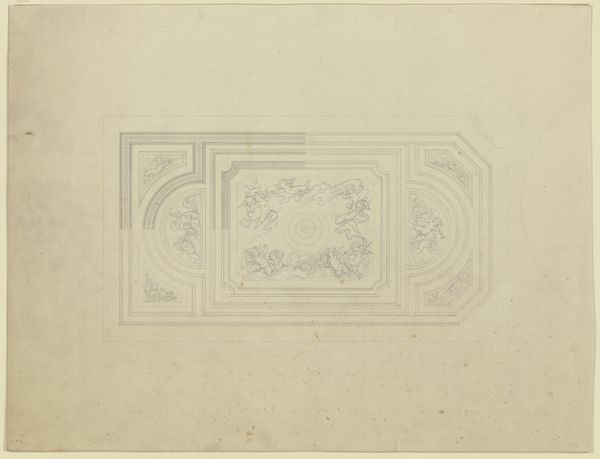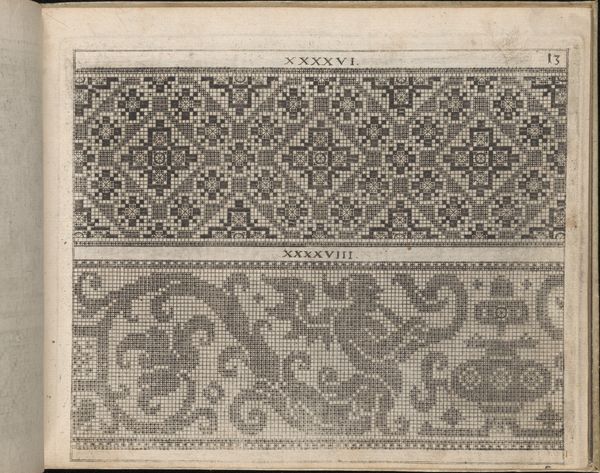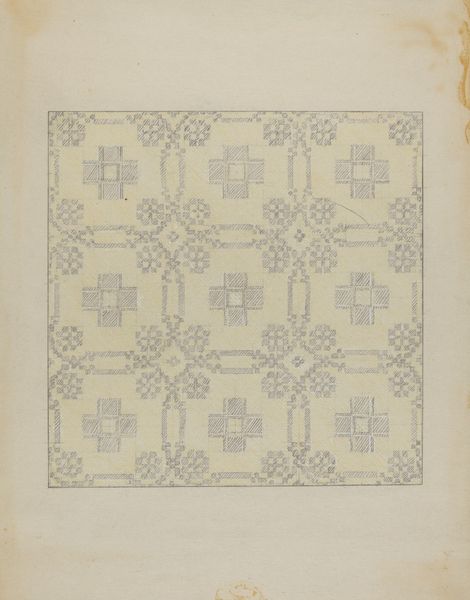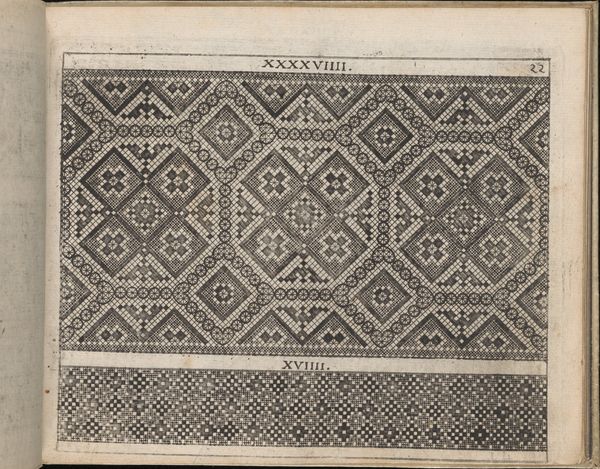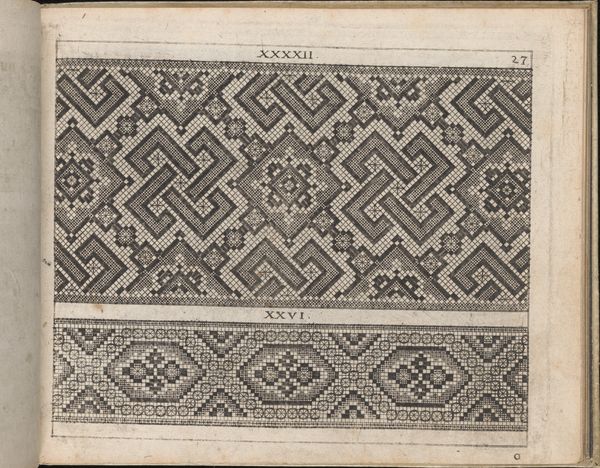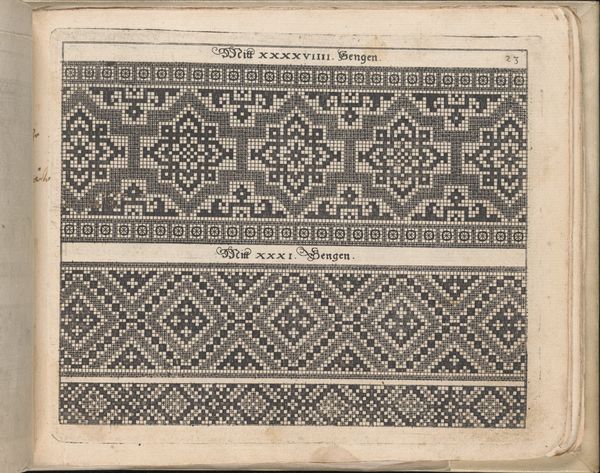
graphic-art, print, textile
#
graphic-art
# print
#
textile
Dimensions: height 289 mm, width 370 mm
Copyright: Rijks Museum: Open Domain
Editor: So, here we have "Vier patronen voor borduurwerk door Johann Siebmacher," or "Four Patterns for Embroidery by Johann Siebmacher," dating from around 1875 to 1900. They are graphic art prints meant as guides for textile work. They look very ordered, neat and somehow…repressed. What can you tell me about these embroidery patterns? Curator: I see these patterns as both beautiful and deeply implicated in the social structures of their time. These weren't just innocent hobbies. Embroidery, like many textile arts, was frequently relegated to women, often within a very restrictive social framework. The patterns themselves, their geometric rigidity, their prescribed nature…it all speaks to a certain expectation of women’s roles and their confinement. Do you notice how these patterns limit deviation or improvisation? Editor: That's a really interesting point. I guess I hadn't considered that the art of embroidery might not have been as free as I assumed, if these are the standard designs. Curator: Exactly! So, who benefitted from such control? Whose aesthetics are centered here, and whose are excluded? Look at the heraldic images – who would have been able to display a coat of arms in their embroidery? Thinking about the purpose of these textiles and where they’d be displayed can tell us a lot about social class. What story do you imagine the textile made with pattern LXVII tells? Editor: I hadn’t considered them as signifiers of class before, but now I see how some patterns might be much more accessible or even subversive than others. It's all about power. Curator: Precisely! It also calls into question who had access to even these embroidery designs, as they became increasingly available to the working classes. These images raise lots of questions. It moves the object from something passive into a catalyst for deeper social interrogation. Editor: Definitely. Thinking about how the accessibility of these designs intersected with social standing has completely changed how I see them! Curator: And considering the textile crafts associated with oppressed or colonized peoples gives even deeper meaning to the images!
Comments
No comments
Be the first to comment and join the conversation on the ultimate creative platform.
